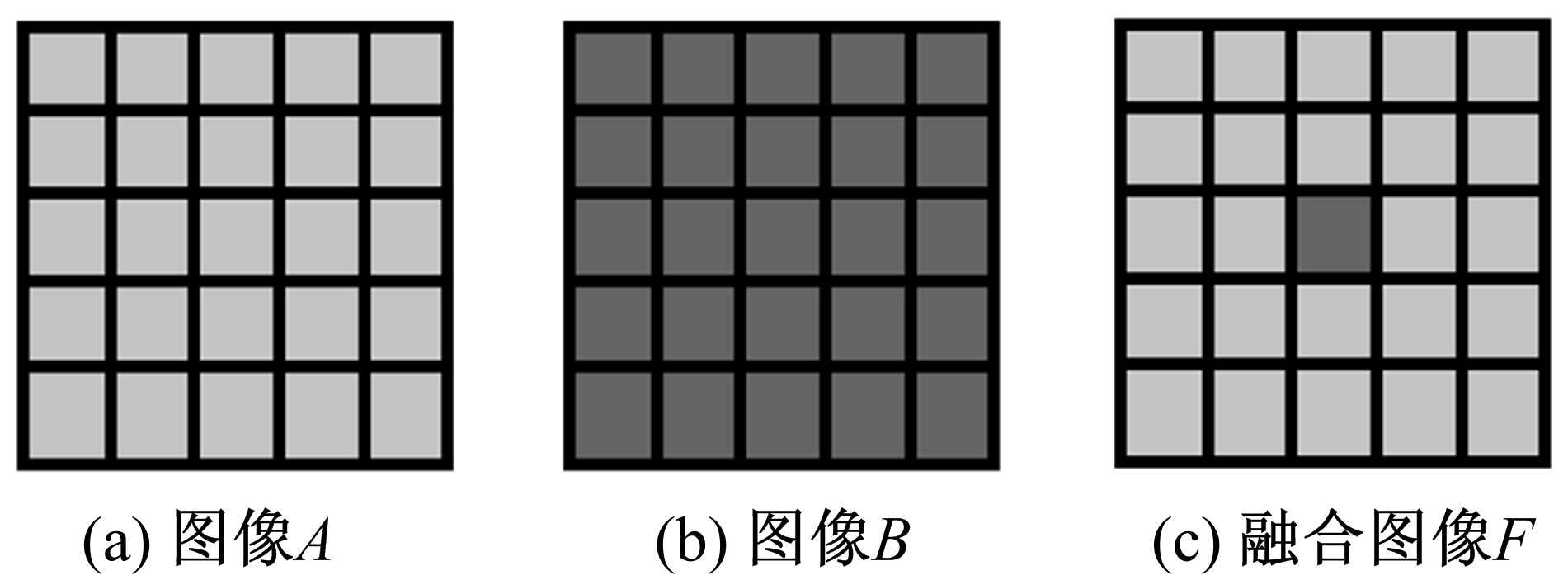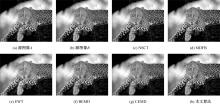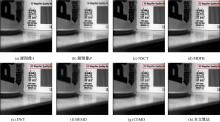Journal of Jilin University(Engineering and Technology Edition) ›› 2020, Vol. 50 ›› Issue (1): 227-236.doi: 10.13229/j.cnki.jdxbgxb20190116
Multi-focus image fusion based on support vector machines and window gradient
Xiong-fei LI1,2( ),Jing WANG1,2,Xiao-li ZHANG1,2,Tie-hu FAN3(
),Jing WANG1,2,Xiao-li ZHANG1,2,Tie-hu FAN3( )
)
- 1. College of Computer Science and Technology,Jilin University, Changchun 130012,China
2. Key Laboratory of Symbolic Computation and Knowledge Engineering of Ministry of Education,Jilin University,Changchun 130012,China
3. College of Instrumentation and Electrical Engineering, Jilin University,Changchun 130033,China
CLC Number:
- TP391
| 1 | 蔺素珍, 韩泽. 基于深度堆叠卷积神经网络的图像融合[J]. 计算机学报, 2017, 40(11): 2506-2518. |
| Lin Su-zhen, Han Ze. Images fusion based on deep stack convolutional neural network[J]. Chinese Journal of Computers, 2017, 40(11): 2506-2518. | |
| 2 | Li S, Kang X, Fang L, et al. Pixel-level image fusion: a survey of the state of the art[J]. Information Fusion, 2017, 33: 100-112. |
| 3 | Zhu Z, Yin H, Chai Y, et al. A novel multi-modality image fusion method based on image decomposition and sparse representation[J]. Information Sciences, 2018, 432: 516-529. |
| 4 | Do M N, Vetterli M. The contourlet transform: an efficient directional multiresolution image representation[J]. IEEE Transactions on Image Processing, 2005, 14(12): 2091-2106. |
| 5 | da Cunha A L, Zhou J, do Minh N. The nonsubsampled contourlet transform: theory, design, and applications[J]. IEEE Transactions on Image Processing, 2006, 15(10): 3089-3101. |
| 6 | Yang Y, Huang S Y, Gao J, et al. Multi-focus image fusion using an effective discrete wavelet transform based algorithm[J]. Meas Sci Rev, 2014,14(2): 102-108. |
| 7 | Wang H. Multi-focus image fusion algorithm based on focus detection in spatial and NSCT domain[J]. PloS One, 2018, 13(9): e0204225. |
| 8 | 杨扬, 戴明, 周箩鱼, 等. 基于非下采样 Bandelet 变换的多聚焦图像融合[J]. 吉林大学学报: 工学版, 2014,44(2): 525-530. |
| Yang Yang, Dai Ming, Zhou Luo-yu, et al. Multifocus image fusion based on nonsubsampled Bandelet transform [J]. Journal of Jilin University (Engineering and Technology Edition), 2014,44(2): 525-530. | |
| 9 | Moushmi S, Sowmya V, Soman K P. Empirical wavelet transform for multifocus image fusion[C]∥Proceedings of the International Conference on Soft Computing Systems. New Delhi,India, 2016: 257-263. |
| 10 | Chen C, Gend P, Lu K. Multifocus İmage Fusion Based on Multiwavelet and DFB[J]. Chem Engineer Trans, 2015, 46: 277-282. |
| 11 | Huang N E, Shen Z, Long S R, et al. The empirical mode decomposition and theHilbert spectrum for nonlinear and nonstationary time series analysis[J]. Proc of the Royal Society of London A, 1998, 454:903-995. |
| 12 | 李欢利, 郭立红, 陈涛, 等. 基于改进的经验模态分解的虹膜识别方法[J]. 吉林大学学报: 工学版, 2013,43(1): 198-205. |
| Li Huan-li, Guo Li-hong, Chen Tao, et al. Iris recognition based on improved empirical mode decomposition method [J]. Journal of Jilin University (Engineering and Technology Edition), 2013,43(1): 198-205. | |
| 13 | Nunes J C, Niang O, Bouaoune Y, et al. Bidimensional empirical mode decomposition modified for texture analysis[J]. Lect Notes Comp Sci, 2003,2749: 171-177. |
| 14 | Yang J, Guo L, Yu S, et al. A new multi-focus image fusion algorithm based on BEMD and improved local energy[J]. Journal of Software, 2014, 9(9): 2329-2335. |
| 15 | Yeh M H. The complex bidimensional empirical mode decomposition[J]. Signal Processing, 2012, 92(2): 523-541. |
| 16 | 梁灵飞, 平子良. 基于窗口经验模式分解的医学图像增强[J]. 光电子∙激光, 2010, 21(9): 1421-1425. |
| Liang Ling-fei, Ping Zi-liang. Medical image enhancement based on window empirical mode decomposition algorithm[J]. Journal of Optoelectronics·Laser, 2010, 21(9): 1421-1425. | |
| 17 | Huang W, Jing Z. Evaluation of focus measures in multi-focus image fusion[J]. Pattern Recognition Letters, 2007, 28(4): 493-500. |
| 18 | Qu G, Zhang D, Yan P. Information measure for performance of image fusion[J]. Electronics Letters, 2002, 38(7): 313-315. |
| 19 | Xydeas C S, Petrovic V. Objective image fusion performance measure[J]. Electronics Letters, 2000, 36(4): 308-309. |
| 20 | Piella G, Heijmans H. A new quality metric for image fusion[C]∥International Conference on Image Processing, Barcelona, Catalonia, Spain,2003. |
| [1] | Bo-xin WANG,Hai-tao YANG,Qing WANG,Xin GAO,Xiao-xu CHEN. Bridge vibration signal optimization filtering method based on improved CEEMD⁃multi⁃scale permutation entropy analysis [J]. Journal of Jilin University(Engineering and Technology Edition), 2020, 50(1): 216-226. |
| [2] | Yuan-li GU, Yuan ZHANG, Xiao-ping RUI, Wen-qi LU, Meng LI, Shuo WANG. Short⁃term traffic flow prediction based on LSSVMoptimized by immune algorithm [J]. Journal of Jilin University(Engineering and Technology Edition), 2019, 49(6): 1852-1857. |
| [3] | Hong-wei ZHAO,Peng WANG,Li-li FAN,Huang-shui HU,Ping-ping LIU. Similarity retention instance retrieval method [J]. Journal of Jilin University(Engineering and Technology Edition), 2019, 49(6): 2045-2050. |
| [4] | Jun SHEN,Xiao ZHOU,Zu-qin JI. Implementation of service dynamic extended network and its node system model [J]. Journal of Jilin University(Engineering and Technology Edition), 2019, 49(6): 2058-2068. |
| [5] | You ZHOU,Sen YANG,Da-lin LI,Chun-guo WU,Yan WANG,Kang-ping WANG. Acceleration platform for face detection and recognition based on field⁃programmable gate array [J]. Journal of Jilin University(Engineering and Technology Edition), 2019, 49(6): 2051-2057. |
| [6] | Bing-hai ZHOU,Qiong WU. Balancing and optimization of robotic assemble lines withtool and space constraint [J]. Journal of Jilin University(Engineering and Technology Edition), 2019, 49(6): 2069-2075. |
| [7] | Xiang-jiu CHE,Hua-luo LIU,Qing-bin SHAO. Fabric defect recognition algorithm based onimproved Fast RCNN [J]. Journal of Jilin University(Engineering and Technology Edition), 2019, 49(6): 2038-2044. |
| [8] | Yang LU,Shi-gang WANG,Wen-ting ZHAO,Yan ZHAO. Facial expression recognition based on separability assessment of discrete Shearlet transform [J]. Journal of Jilin University(Engineering and Technology Edition), 2019, 49(5): 1715-1725. |
| [9] | Hong-wei ZHAO,Ming-zhao LI,Jing LIU,Huang-shui HU,Dan WANG,Xue-bai ZANG. Scene classification based on degree of naturalness and visual feature channels [J]. Journal of Jilin University(Engineering and Technology Edition), 2019, 49(5): 1668-1675. |
| [10] | Bin LI,Xu ZHOU,Fang MEI,Shuai-ning PAN. Location recommendation algorithm based on K-means and matrix factorization [J]. Journal of Jilin University(Engineering and Technology Edition), 2019, 49(5): 1653-1660. |
| [11] | Jin⁃gang ZHAO,Ming ZHANG,Yu⁃lin ZHAN,Ming⁃zhi XIE. Damage criterion of reinforced concrete pier based on plastic strain energy density [J]. Journal of Jilin University(Engineering and Technology Edition), 2019, 49(4): 1124-1133. |
| [12] | Xiong-fei LI,Lu SONG,Xiao-li ZHANG. Remote sensing image fusion based on cooperative empirical wavelet transform [J]. Journal of Jilin University(Engineering and Technology Edition), 2019, 49(4): 1307-1319. |
| [13] | Yuan-ning LIU,Shuai LIU,Xiao-dong ZHU,Guang HUO,Tong DING,Kuo ZHANG,Xue JIANG,Shu-jun GUO,Qi-xian ZHANG. Iris secondary recognition based on decision particle swarm optimization and stable texture [J]. Journal of Jilin University(Engineering and Technology Edition), 2019, 49(4): 1329-1338. |
| [14] | Bin LI,Guo⁃jun SHEN,Geng SUN,Ting⁃ting ZHENG. Improved chicken swarm optimization algorithm [J]. Journal of Jilin University(Engineering and Technology Edition), 2019, 49(4): 1339-1344. |
| [15] | Feng⁃wen ZHAI,Jian⁃wu DANG,Yang⁃ping WANG,Jing JIN,Wei⁃wei LUO. Extended contour⁃based fast affine invariant feature extracting [J]. Journal of Jilin University(Engineering and Technology Edition), 2019, 49(4): 1345-1356. |
|
||















